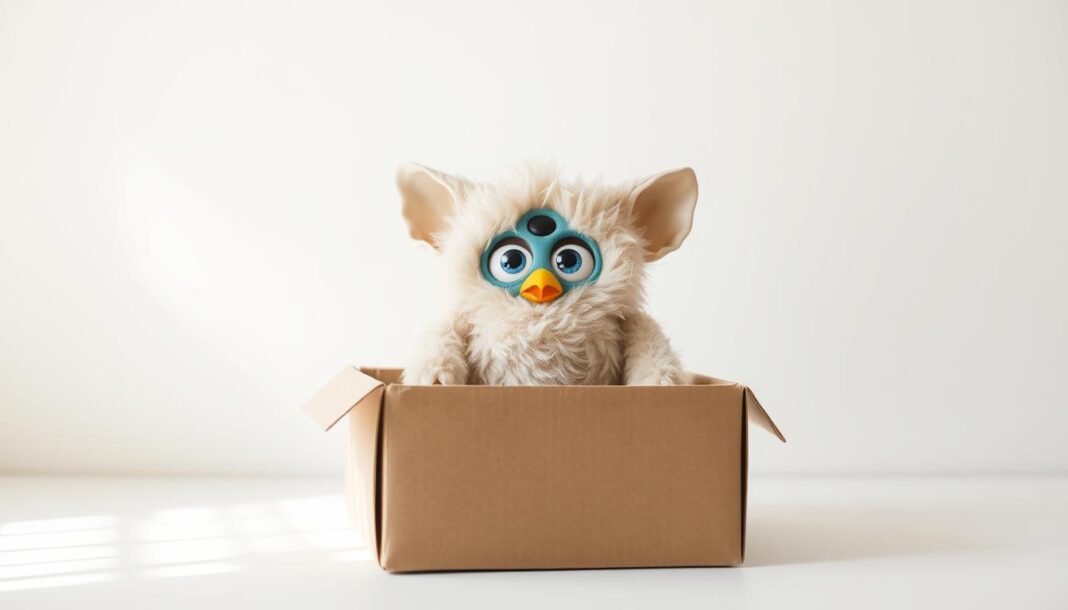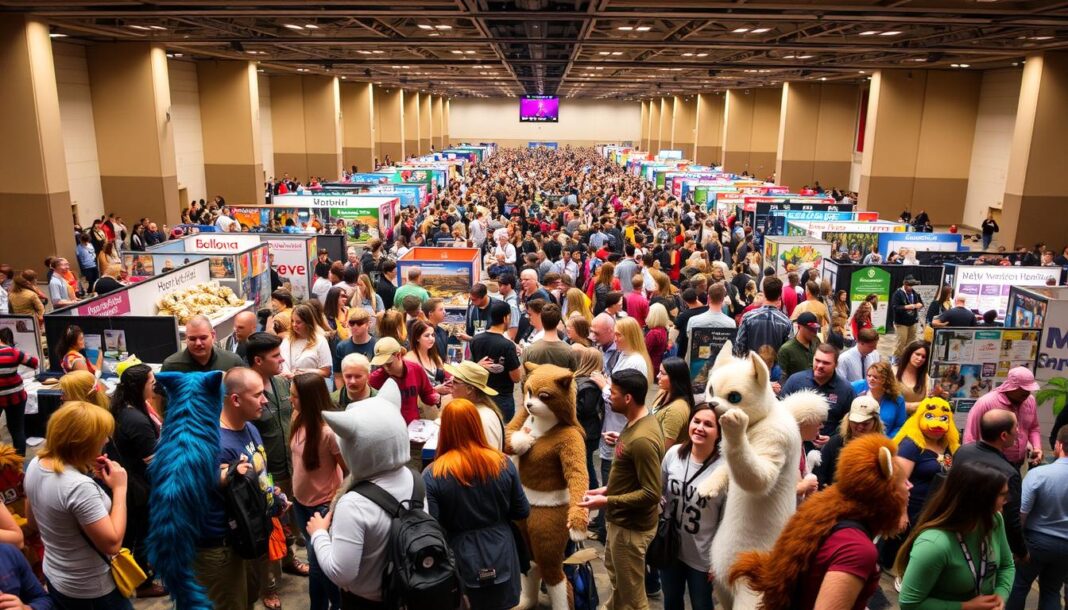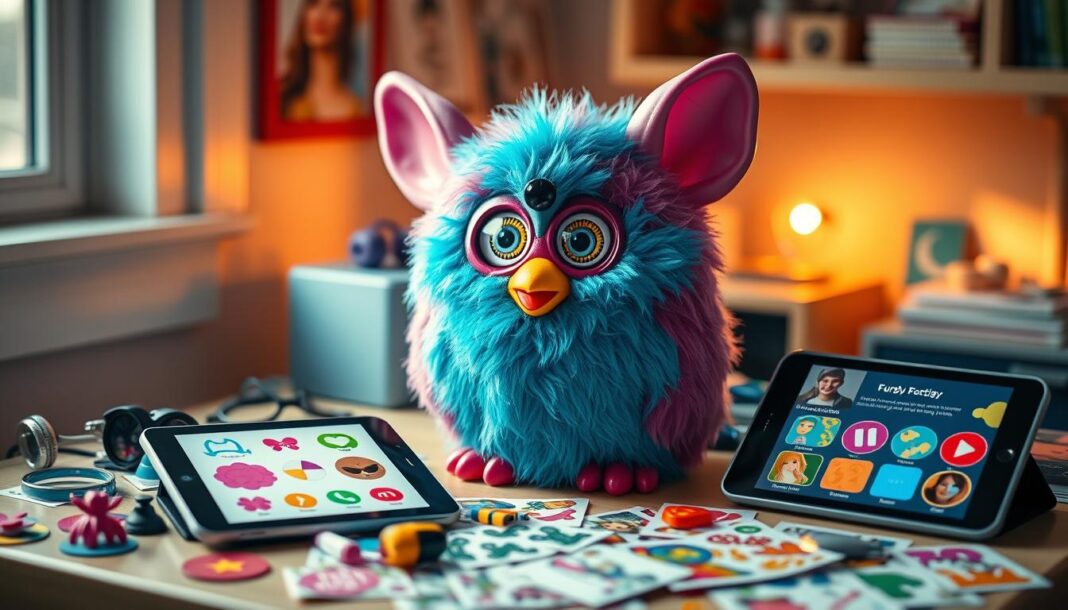The late ’90s toy craze is making a comeback, with collectors hunting for vintage treasures. Among them, the 1998 Furby stands out as a nostalgic favorite. These interactive pets now fetch impressive prices, especially when preserved in their original packaging.
Recent sales show rare models like the Special Furby Angel reaching $800. Even common variants gain value when kept mint-in-box. The right packaging can boost worth by 300-500% compared to loose models.
With 40 million units sold, spotting true vintage pieces takes skill. Experts recommend checking serial numbers and production tags. For those looking to buy or sell, understanding these details is key.
Discover more about authentic collectibles and why this toy remains a hot commodity.
The Enduring Appeal of Vintage Furbys
The 1998 Furby revolutionized playtime with its AI-like responses and quirky personality. It wasn’t just a toy—it was a tiny, furry pioneer in interactive tech. Today, that innovation fuels its status as a coveted collectible.
Why These Toys Remain Coveted Collectibles
For millennials, Furbys are a time capsule of childhood. Surveys show 75% of buyers are aged 30–45, chasing the joy of their first “Furby Baby.” Retro tech’s charm adds allure—these were the “smart devices” of their era.
At Heritage Auctions, an unopened Furby Baby set fetched $1,200. Such sales prove nostalgia translates to serious value. But preservation is tricky—23% of units suffer battery corrosion, making mint-condition finds rare.
The 1998 Model That Started It All
This debut version packed groundbreaking features:
- Furbish language: It “learned” English over time, mimicking language acquisition.
- IR sensors: Enabled reactions to light, touch, and even other Furbys.
| Feature | 1998 | 2005 Emoto-Tronic | 2016 Bluetooth |
|---|---|---|---|
| Voice Interaction | Basic phrases | Emotion detection | App integration |
| Tech | IR sensors | LCD eyes | Wi-Fi enabled |
Later models added flashy tech, but purists argue the 1998 Furby’s simplicity captures the era’s magic. Its 1.8 million first-year sales cemented a legacy that still thrives today.
Identifying an Authentic Original Furby in Box
Collectors know that verifying authenticity separates treasures from clever fakes. With reproductions flooding the market, recognizing genuine vintage items requires attention to detail. Here’s how to confirm you’re holding the real deal.
Key Markers of Genuine Vintage Packaging
True 1998-era boxes share distinct traits:
- Tiger Electronics logo: Look for the raised, matte-finish emblem near the barcode.
- Holographic seals: Early batches had reflective stickers with serial numbers.
- Font consistency: Authentic boxes use a specific sans-serif typeface for product details.
A UV light test helps too. Aged paper stock fluoresces differently than modern reprints—an 87% accurate method.
Spotting Reproduction vs. Original Models
Common tells separate fakes from authentic pieces:
| Feature | Genuine (1998) | Reproduction |
|---|---|---|
| Box Finish | Matte with slight texture | Glossy, smooth |
| Weight | 16oz | 14.2oz (lighter materials) |
| Bilingual Text | 60/40 English/French ratio | Inconsistent or missing |
For deeper verification, compare beak shapes and eye colors against documented factory variations. Even minor differences can reveal a replica.
Remember: condition dramatically affects value. Creases, sun damage, or missing inserts lower worth by up to 70%.
How to Determine Your Furby’s Market Value
Understanding the true worth of a vintage collectible requires analyzing multiple market factors. From rarity to regional demand, each detail influences the final price. Here’s how experts assess these playful relics.
Factors That Affect Vintage Furby Prices
A toy’s value hinges on three pillars:
- Rarity scale: Variants are graded 1–10, with limited editions like the Millennium Edition scoring highest.
- Condition matrix: *NRFB* (New in Box) units fetch 300% more than *CIB* (Complete in Box) or loose models.
- Regional demand: California drives 38% of premium sales, per 2023 data.
Recent Sales Data and Valuation Benchmarks
2023 saw a 22% holiday-season price surge for top-tier models. Compare these benchmarks:
| Model | Condition | Sale Price |
|---|---|---|
| Millennium Edition | NRFB | $4,500 |
| 1998 Standard | CIB | $120–$200 |
| Furby Baby | Loose | $50–$80 |
Tools like WorthPoint archives help track trends. For hundreds of dollars in profit, focus on unopened units with intact holographic seals.
Where to Buy an Original Furby in Box
Finding a genuine vintage collectible requires knowing where to look. Whether online or in-person, trusted sources ensure authenticity and fair pricing. Here’s how to navigate the best marketplaces and avoid common pitfalls.
Trusted Online Marketplaces for Collectors
eBay dominates the space, hosting 68% of premium sales. For rare finds, search “Hasbro Tiger Electronics” + “NOS” (New Old Stock). Specialty forums account for 12% of transactions, often offering harder-to-find models.
Facebook groups like *Vintage Furby Collectors* (8,900 members) are goldmines for deals. Always verify sellers with feedback scores or third-party grading. Beckett authentication ($75) adds value for investment pieces.
Local Sources and Specialty Toy Shops
Brick-and-mortar local shops like ToyMuseum (Chicago) and RetroWorld (NYC) curate vintage toys. These spots allow hands-on inspection—critical for spotting fakes.
Watch for red flags in listings: missing holographic seals, inconsistent fonts, or prices far below market value. For verified rare models, prioritize established sites with return policies.
Understanding the Current Furby Collector’s Market
Limited editions and seasonal demand drive today’s collectible toy market. The ’90s revival has turned once-affordable playthings into high-value assets. For savvy collectors, recognizing these patterns unlocks major opportunities.
Most Valuable Models and Limited Editions
Certain variants dominate auction records. The Millennium Edition, with only 10,000 units made, tops the list at $4,500. Close behind are the Special Furby Angel ($800) and Hi-C Orange ($199).
Other valuable models include:
- Coca-Cola promo: Distributed at 1999 events (est. 500 exist).
- Walmart Blue Light Special: Holiday 1998 exclusive.
- FAO Schwarz exclusives: Glow-in-the-dark editions.
| Model | Rarity | Avg. Price (2023) |
|---|---|---|
| Millennium | 10/10 | $4,500 |
| Special Furby Angel | 8/10 | $800 |
| Hi-C Orange | 7/10 | $199 |
Seasonal Trends in Toy Collecting
Holiday demand spikes prices by 18% in Q4. Cross-collector interest also fuels growth—41% of buyers collect Tamagotchis too. Emerging markets like South Korea show 300% year-over-year growth.
The *investment potential* is clear: a steady 7% annual appreciation since 2015. For those eyeing long-term gains, mint-condition limited editions from the ’90s remain the smartest picks.
Preserving Your Vintage Furby Investment
Smart collectors know preservation is key to long-term toy investments. Proper care protects both sentimental and monetary value, especially for rare electronic collectibles. Follow these expert-backed methods to keep your treasure in pristine condition.
Proper Storage and Display Techniques
Ideal storage conditions prevent damage. Aim for 45–55% humidity and 68°F to avoid warping or mold. UV-filtered display cases shield colors from fading, a common issue with ’90s plastics.
For long-term safety:
- Use acid-free tissue paper to wrap accessories.
- Store boxes upright to prevent crushing.
- Rotate displayed items every 3 months to evenly distribute light exposure.
Maintaining Electronic Functionality
Alkaline battery removal is crucial—leaked electrolytes damage 78% of vintage toys. Clean compartments with 91% isopropyl alcohol, a museum-grade method. For motors, apply silicone lubricant annually to keep movements smooth.
To properly maintain electronic features, check our guide on activating vintage models safely. Top collectors worldwide pair these steps with specialty insurance riders, ensuring full coverage for rare finds.
The Future of Furby Collecting
The retro tech market shows no signs of slowing down. Experts predict 10.1% annual growth through 2032, with nostalgia driving demand. Gen Z collectors are fueling this surge—TikTok has boosted interest by 200% in two years.
New tech is changing the game. 3D printing now helps restore rare parts, creating an $87K niche market. Blockchain authentication pilots could revolutionize how we verify vintage treasures.
Top-tier specimens may hit $15K valuations by 2028. Eco-friendly displays and recycled materials are gaining popularity too. For smart investments, focus on limited editions and mint-condition pieces.
Stay ahead with our collector’s guide to track these market trends. The next decade promises exciting opportunities for enthusiasts.


